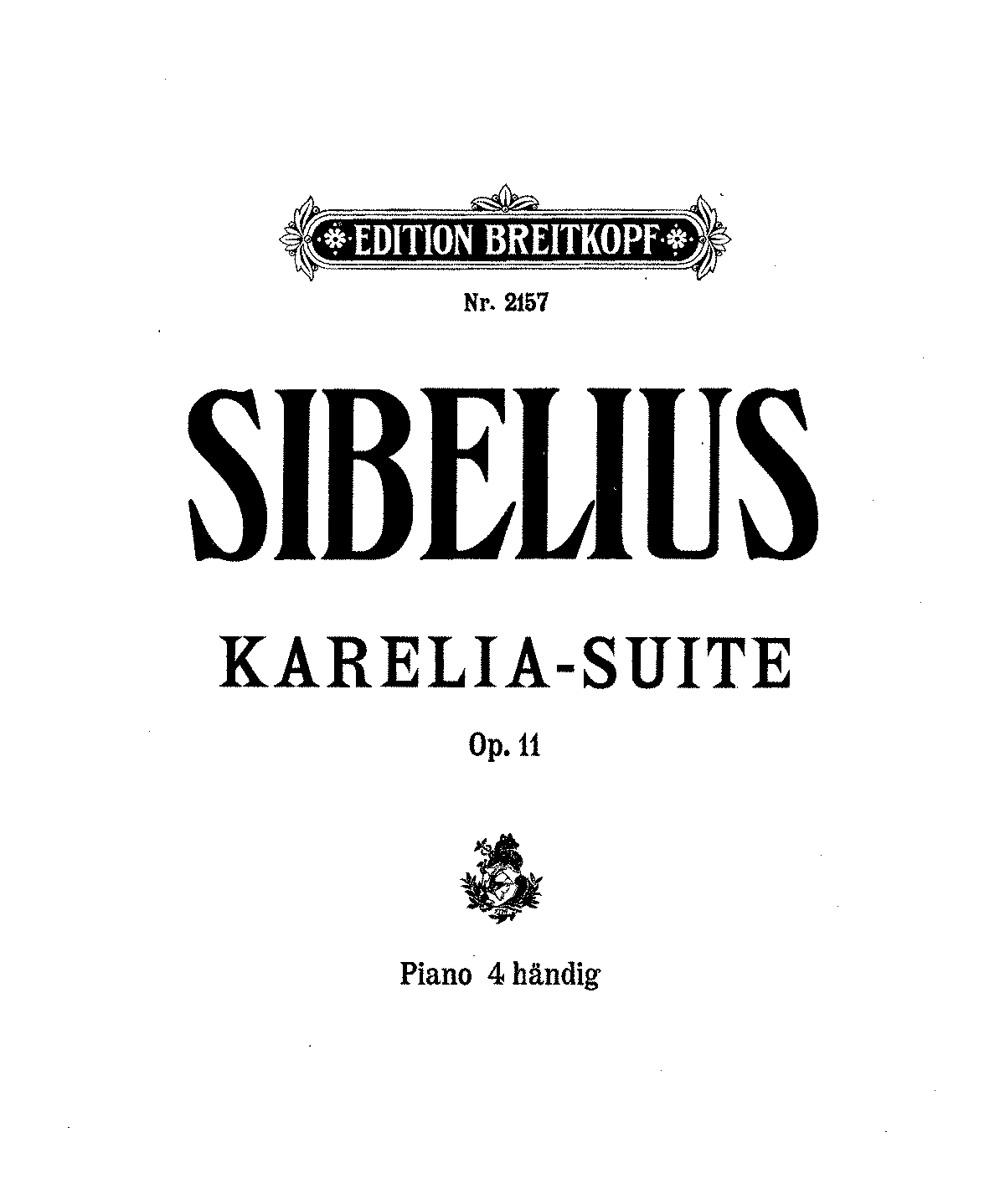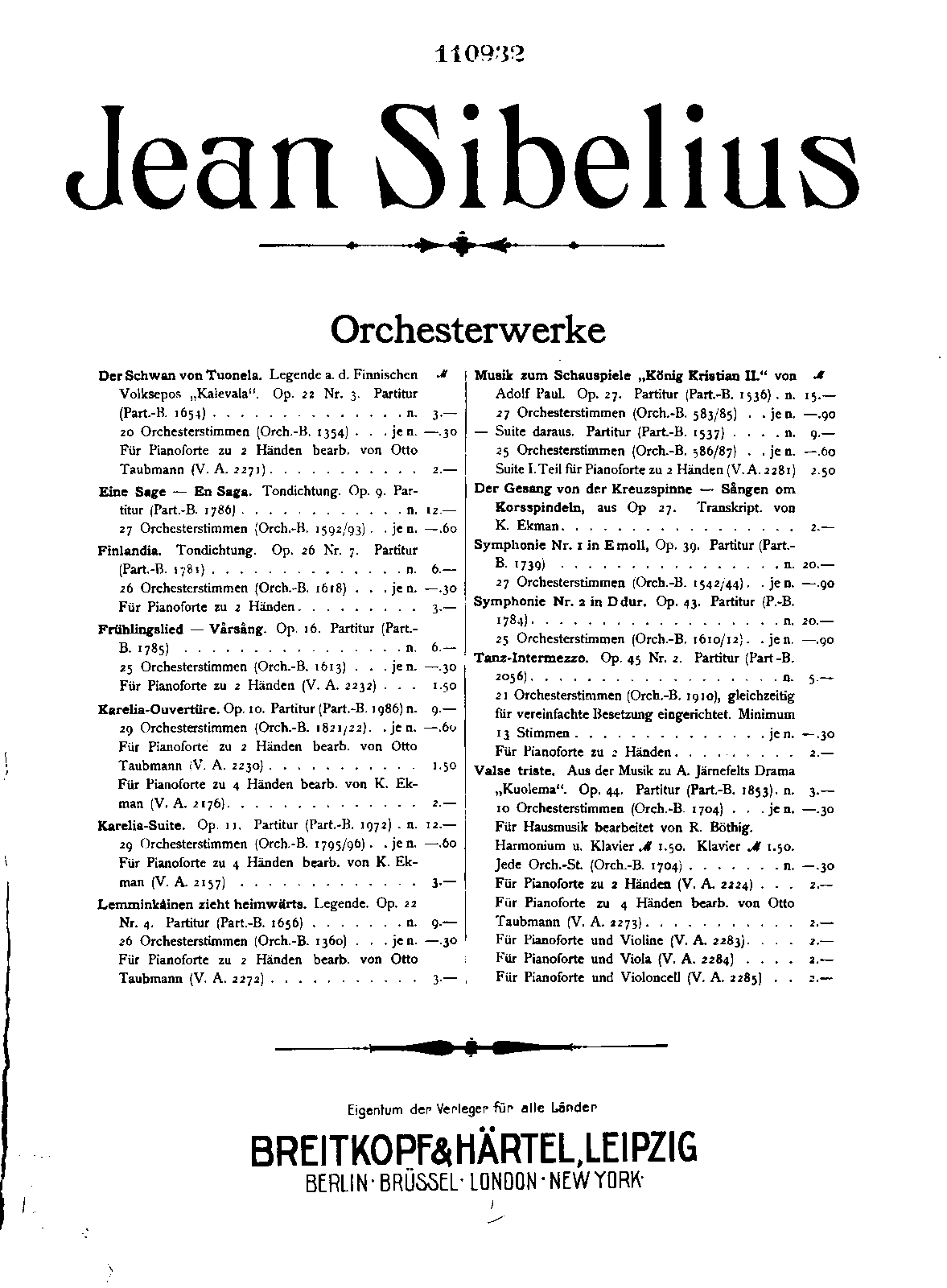

6, Ariel's First Song with introduction and chorus


Recordings of the suites include those by Sir Thomas Beecham, Sir Charles Groves, Horst Stein, Leif Segerstam and Michael Stern. The complete Incidental Music was not recorded for the first time until 1992, by the Lahti Symphony Orchestra, Lahti Opera Chorus, and soloists under Osmo Vänskä, as part of the complete recordings of all Sibelius's works. Various recordings do not stick to the formal suites but include other items. It is in the form of these suites that the music has been most frequently heard in the concert hall and on recordings. These suites condensed and combined items from the stage music, sometimes in ways that obscure the drama. Sibelius published the Overture as a separate piece, and arranged two suites from the music, comprising 19 pieces. The Overture has been described as "the single most onomatopoetic stretch of music ever composed". Composed in 1893, just a year after Sibelius gave up on his lifelong dream of being a solo. then import it into Sibelius, and edit it. It can output the score in MusicXML format, which can be imported into Sibelius then. It is able to automatically add the missing barlines.
Imslp sibelius 2 pdf#
For this performance, he composed an alternative Epilogue, bringing the number of items to 35. One of Sibelius’ lesser-known works is his own arrangement for string orchestra of his 5th and 6th Impromptus, set in a much gentler style than the glittering piano composition from which the piece was derived. PdftoMusic Pro may be an alternative to Photoscore in the case of 'vector' pdf files like this one (it doesn't work on 'raster' pdf files instead, such as scans). He did not hear the music for the first time until the autumn of 1927 when the Finnish National Theatre in Helsinki staged the work. Only four days later Sibelius set off for an extended trip to work on new commissions in Rome. Reviews noted that "Shakespeare and Sibelius, these two geniuses, have finally found one another", and praised in particular the part played by the music and stage sets. The first night attracted international attention but Sibelius was not present. It was first performed in Copenhagen on 15 March 1926. It originally consisted of 34 pieces, for vocalists, mixed-voice choir, harmonium and a large orchestra. The complete music lasts for over an hour. (Although according to Sibelius's journal, he was working on the music in May 1927.) Sibelius wrote it from the autumn of 1925 through to the early part of 1926, during which time he turned 60. In 1925, his Danish publisher Wilhelm Hansen again raised the idea, as the Royal Theatre in Copenhagen was going to stage the work the following year, directed by Adam Poulsen. The idea for music for The Tempest was first suggested to Sibelius in 1901, by his friend Axel Carpelan. The Tempest and Tapiola were to be his last great works, and he wrote little else for the remaining 32 years of his life, which came to be known as "The Silence of Järvenpää". Sibelius had completed his 7th Symphony, which was to be his last, in 1924.


 0 kommentar(er)
0 kommentar(er)
